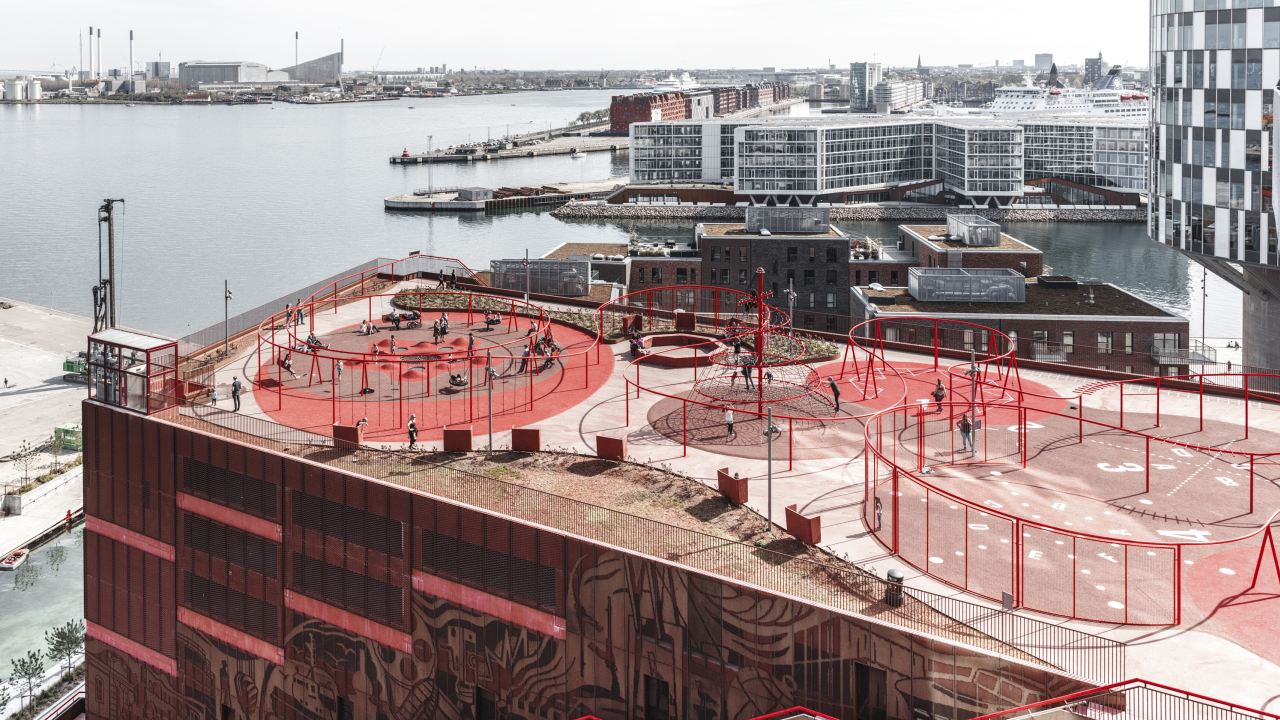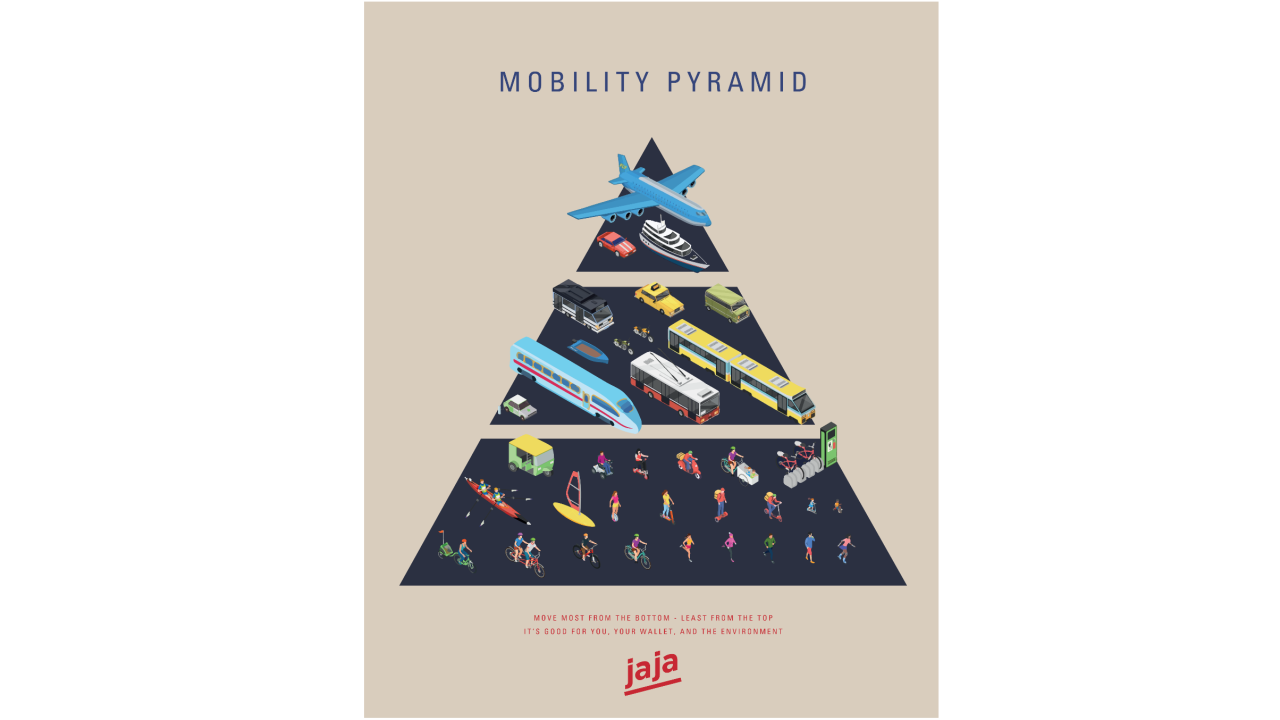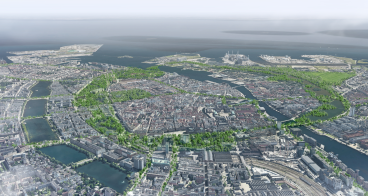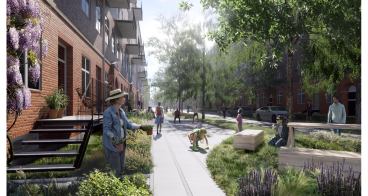Green mobility: Let’s put European cities on a Mobility Diet
If we promote green mobility forms such as walking and cycling over cars, our cities can become greener and more attractive to live in. But how do we stop designing cities around cars?
Despite numerous efforts, CO2 emissions from the mobility sector are increasing in the EU. Simultaneously, we see an increasing number of people moving to cities which demands a change in the city districts to create more space. It is therefore difficult to see how we can continue to give so much space to private cars as we do today.
What if we rethink the way our cities are structured around cars, and instead shape them around humans? Replacing a large amount of private car use with green mobility can free up a lot of space for green areas, plazas, playgrounds – and not least, make cities healthier and more attractive to live in.
The Mobility Diet
At JAJA Architects, we have formed a Mobility Pyramid promoting mobility beyond black-and-white terms. Inspired by the food pyramid that is used to communicate how to create a healthy diet, and especially the revamp of it done by Coop, we have taken the liberty to translate it into an easily digestible ‘mobility diet’.
The idea of putting cities on a diet is thus first and foremost a communications tool to show how we can make our cities better and healthier. The diet analogy explains that it’s OK to drive or fly – just like eating sweets or fast food occasionally – but it’s important to keep in mind which transportation modes make up the biggest part of the diet. In this diet framework, we therefore want to show that just like our bodies, our cities will become unhealthy if we don’t prioritize the healthiest modes.
Encouraging people to “move most from the bottom – least from the top”, the pyramid has a bottom section of active-mobility forms such as cycling, walking, or other modes that move the body. The middle section shows buses, trains and shared cars and the upper section shows the transportation forms that we need occasionally but should use the least – plains, cruises, and highly CO2-emitting cars.
To make our cities healthier and more attractive, we should put them on a mobility diet. But how do we implement the diet from concept to execution?
How to put cities on a mobility diet
One way to apply the mobility diet to cities is by using ‘backcasting’ as a method. The method is applied by producing a vision of a desirable future with a range of stakeholders to build consensus and support, and then it determines pathways to get there. One way we often use ‘backcasting’ at JAJA Architects is by creating visions of future cities (such as Copenhagen or Oslo) where we use our background as architects and mobility planners to communicate via illustrations, descriptions, images, and drawings, creating before/after scenarios and identify key locations and areas to develop and transform.
Another way to implement the mobility diet in cities is by using the method ‘prototyping’. With this method, we take an idea from the future and insert it in the present to test it at the human scale. This gives a great prediction of how different new programs could work in future scenarios. An example of using prototyping is building a 'Next Generation Mobility Hub’. The mobility hub promotes green mobility while providing attractive public spaces, various mobility services, and room for offices or other businesses. Placing one in a current neighbourhood is a way to examine the benefits of taking away cars from the streets to create new public functions.
Transforming individual streets in cities, using them as ‘test laboratories’ for future liveability scenarios is another way to use ‘prototyping’. The ‘Street Transformations’ gives an insight into what is possible within a specific area, and gathering feedback from residents in the street is beneficial for understanding their aspects, desires, and concerns.
A paradigm shift is needed
The mobility pyramid and its associated methods are tools that can be used as a lever to help municipalities and urban planners prioritise green and healthy transportation forms. Shaping our cities after the pyramid is introducing a paradigm shift in urban planning but isn’t that what we urgently need to turn the tide?
Learn more about the JAJA Architects by accessing the shared file section below.
Robert is an architect and mobility expert based in Copenhagen, Denmark. He is Head of Mobility at JAJA Architects (Silver Partner at EIT Urban Mobility) where his team is responsible for designing mobility strategies for cities, consultation for private mobility operators, and the development of new typologies of transport infrastructure. He holds a PhD in sustainable urban mobilities from Aalborg University. Robert has also completed studies at the University of Sydney, Royal Danish Academy of Fine Arts, and the Yale School of Architecture.
Published on 26 January 2023.










